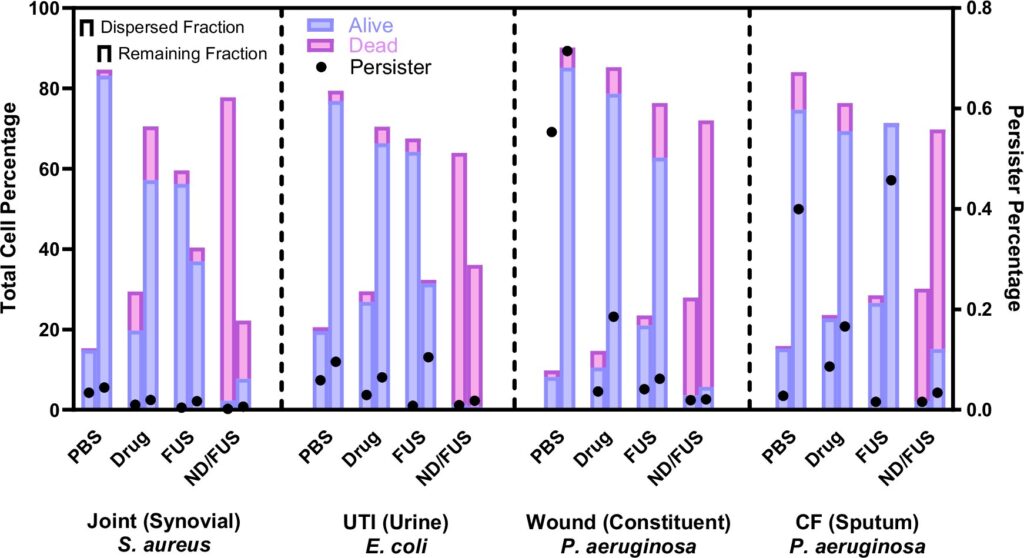Researchers at the University of Oxford have developed a new drug delivery system using ultrasound-activated nanoparticles to break through and destroy bacterial biofilms. This offers a promising solution that could address the global crisis of chronic antibiotic-resistant infections affecting hundreds of millions of people worldwide. The work is published in npj Antimicrobials and Resistance.
In up to 80% of chronic infections, bacteria form biofilms—a slimy substance secreted by the bacteria which forms a protective matrix around them. Biofilms are a major contributor to antimicrobial resistance as they protect bacteria from both human immune cells and antimicrobial drugs, increasing their resistance to treatment by up to 1,000-fold. Biofilms are very difficult to remove without mechanically breaking them up, which is not straightforward to do inside the body.
To address this, a team from Oxford’s Department of Engineering Science and the Nuffield Department of Orthopedics, Rheumatology, and Musculoskeletal Sciences (NDORMS) have engineered antibiotic-loaded nanoparticles.
When activated by ultrasound, these rapidly vaporize and thus both physically disrupt biofilms and release drugs directly at the infection site. Ultrasound can be precisely focused deep inside the body, which is a key advantage for targeting infections non-invasively.
Professor Eleanor Stride, professor of biomaterials, University of Oxford and principal investigator of the project, said, “Innovative solutions are desperately needed to extend the action of life-saving antibiotics.
“Our findings are very promising, as treatment of chronic infections associated with biofilm production continues to be a challenge in the face of spreading antimicrobial resistance worldwide. The methods we used in this study were designed with clinical use in mind, and we look forward to developing this system further for application in health care settings.”
The nanoparticles were tested against 10 clinical bacterial strains, including E. coli and methicillin-resistant Staphylococcus aureus (MRSA), delivering four different antibiotics. With bacteria that did not form biofilms, the combination of the nanoparticles and ultrasound reduced the antibiotic concentration required to prevent their growth by more than 10-fold compared to conventional treatment.
In biofilm infections, the combination was even more effective, reducing the antibiotic concentration needed by more than 40-fold, and eliminating 100% of bacteria at clinically feasible doses. Importantly, the system was highly effective against persister cells—dormant bacteria that are usually able to survive treatment and are thus responsible for infections recurring.
It can take a very high dose of antibiotics to kill these cells, which could be dangerous or impossible to give to patients. The nanoparticles reduced the drug concentration needed to eliminate persister cells by 25-fold compared with free antibiotics.
Biofilms are found in numerous difficult-to-treat infections such as chronic wounds, urinary tract infections, cystic fibrosis-related lung infections, and even acne. The team are now working to develop the nanoparticle manufacturing method so that they can be tested clinically as soon as possible.


